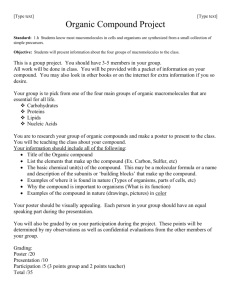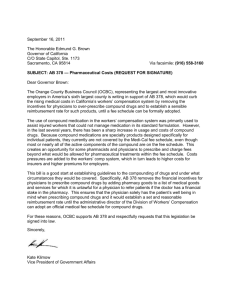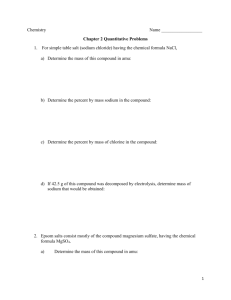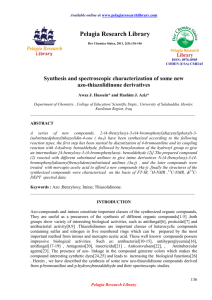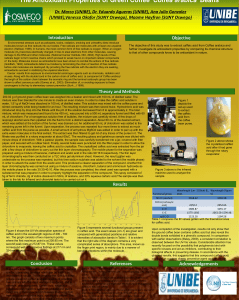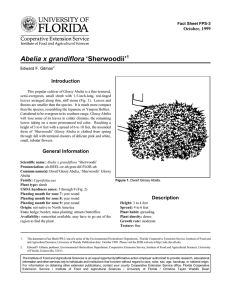supplementary material
advertisement
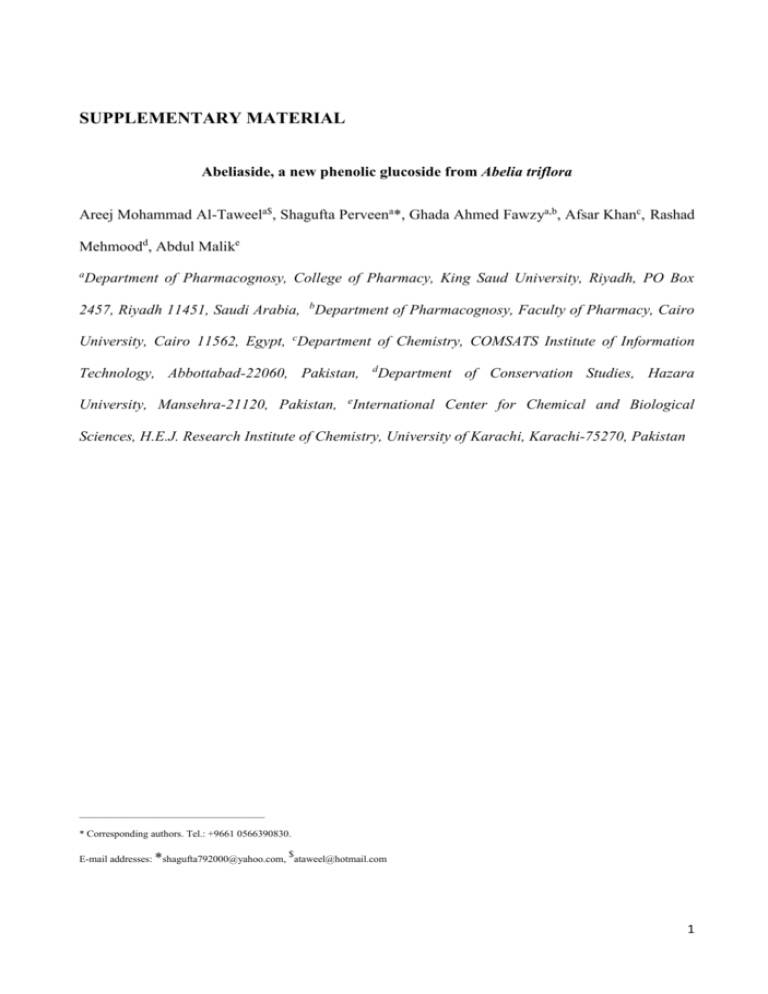
SUPPLEMENTARY MATERIAL Abeliaside, a new phenolic glucoside from Abelia triflora Areej Mohammad Al-Taweela$, Shagufta Perveena*, Ghada Ahmed Fawzya,b, Afsar Khanc, Rashad Mehmoodd, Abdul Malike a Department of Pharmacognosy, College of Pharmacy, King Saud University, Riyadh, PO Box 2457, Riyadh 11451, Saudi Arabia, bDepartment of Pharmacognosy, Faculty of Pharmacy, Cairo University, Cairo 11562, Egypt, cDepartment of Chemistry, COMSATS Institute of Information Technology, Abbottabad-22060, Pakistan, d Department of Conservation Studies, Hazara University, Mansehra-21120, Pakistan, eInternational Center for Chemical and Biological Sciences, H.E.J. Research Institute of Chemistry, University of Karachi, Karachi-75270, Pakistan ____________________________________ * Corresponding authors. Tel.: +9661 0566390830. $ E-mail addresses: *shagufta792000@yahoo.com, ataweel@hotmail.com 1 Abstract A new phenolic glucoside, abeliaside, along with four known compounds, 5,6,7,4-tetrahydroxy flavones, caffeic acid, 4-O-caffeoylquinic acid and caffeic acid glucoside, were isolated from the leaves of Abelia triflora triflora R. Br. (Caprifoliaceae). The structure of new compound was elucidated by different spectroscopic techniques. Compounds 15 were assayed for their anticancer activities against two cancerous human cell lines, MCF-7, PC-3 cells and normal Vero cell line using the Crystal Violet Staining method (CVS). From the results it could be seen that caffeic acid, possessed the highest anticancer effect against MCF-7 (IC50: 17 µg/ml) and PC-3 (IC50: 20.1 µg/ml) compared to vinblastine sulphate as reference drug (IC50: 4.6, 2.8 µg/ml). The other compounds showed weak anticancer activity on both cell lines. Keywords: Caprifoliaceae, Abelia triflora, Phenolic glucosides, MCF-7 cells, PC-3 cells. 2 Table S1. 1H- and 13C-NMR data for Compound 3 3 Position (H) (C) 1 - 125.6 2 7.08 (d, 2.0) 121.8 3 - 115.3 4 - 149.3 5 6.77 (d, 8.0) 146.2 6 6.99 (dd, 8.0, 2.0) 114.8 7 7.46 (d, 16.0) 145.9 8 6.26 (d, 16.0) 116.2 9 - 167.0 1 4.30 (d, 8.0) 103.3 2 3.29 (m) 71.8 3 3.28 (m) 76.6 4 3.16 (m) 70.4 5 3.08 (t, 8.5) 74.3 6 4.16 (dd, 12.0, 6.5) 63.9 4.40 (dd, 12.0, 1.5) 1 4.53 (brd, 10.0) 64.9 4.62 (brd, 10.0) 2 - 139.0 3 6.17 (t, 1.5) 113.9 4 4.90 (d, 1.5) 73.7 5 - 173.7 6 - 169.5 δ in ppm and J in Hz. Recorded in DMSO-d6 at 500 MHz. 3 Figure S1: 13C-NMR of compound 3 4 Figure S2: 13C-NMR of compound 3 5 Figure S3: 1H-NMR of compound 3 6 Figure S4: 1H-NMR of compound 3 7 Figure S5: HSQC data of compound 3 8 Figure S6: HMBC data of compound 3 9 H H O HO O H HO H H COOH H H OH O O HO HO COOH OH H H H H H Figure S7. Important HMBC correlations of compound 3. 10





